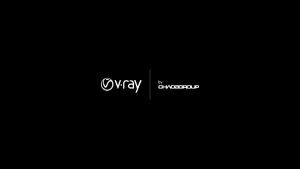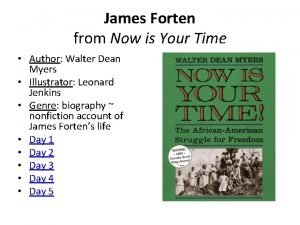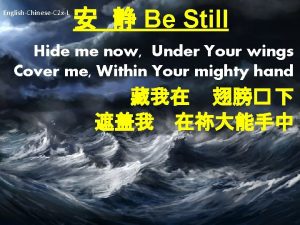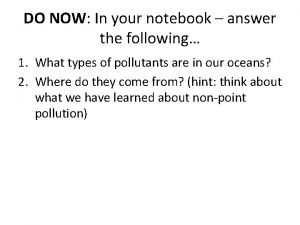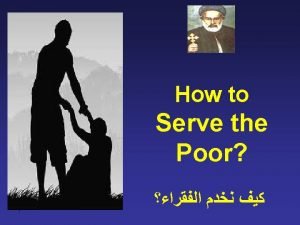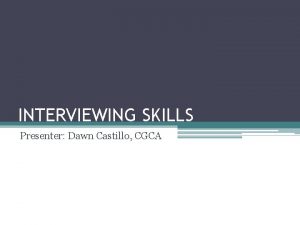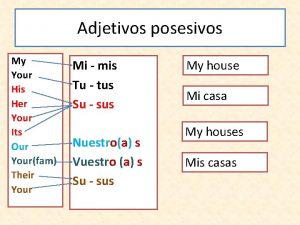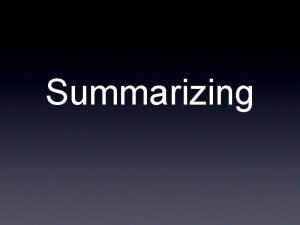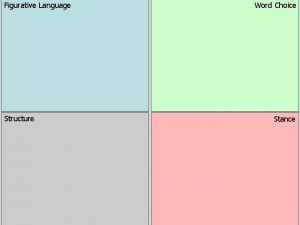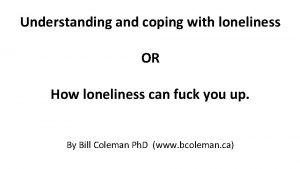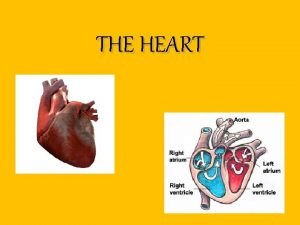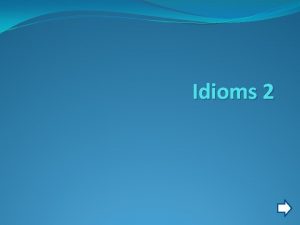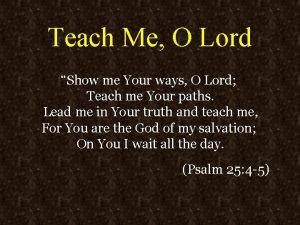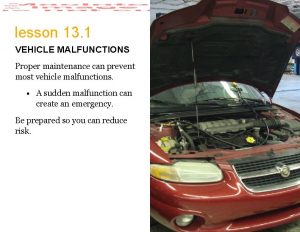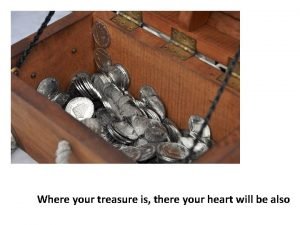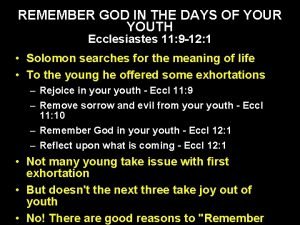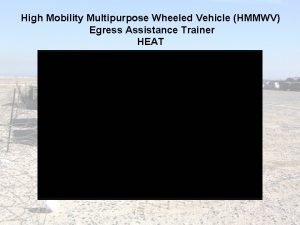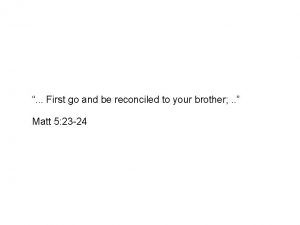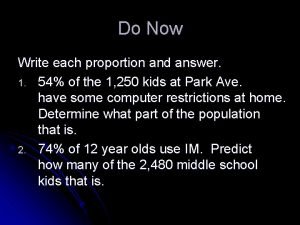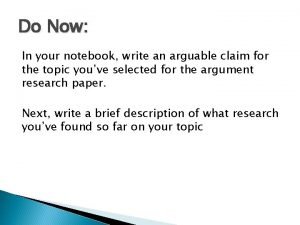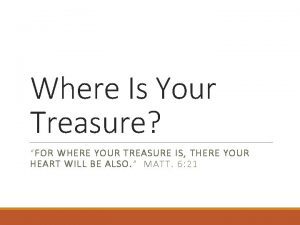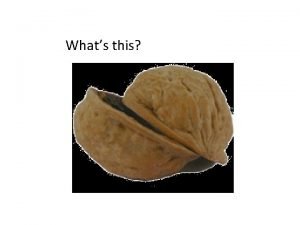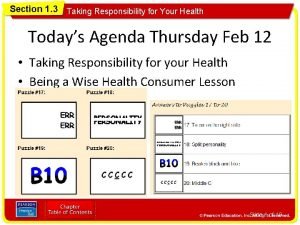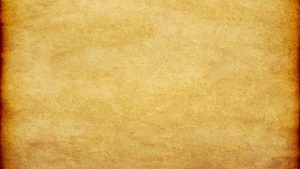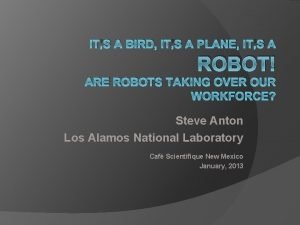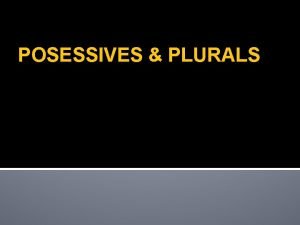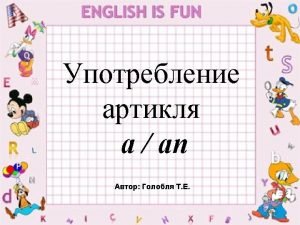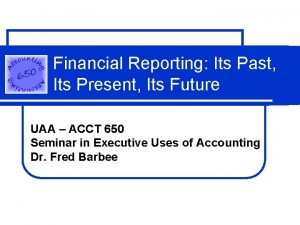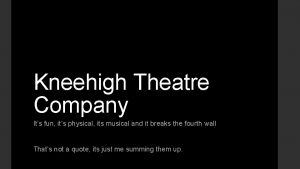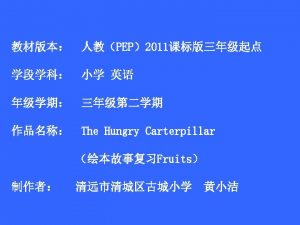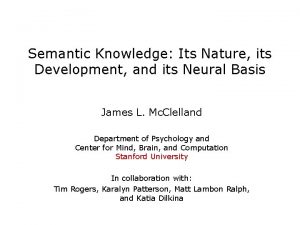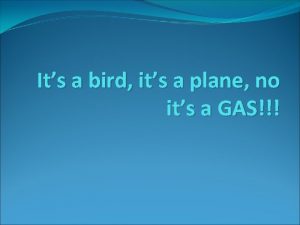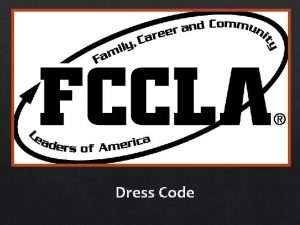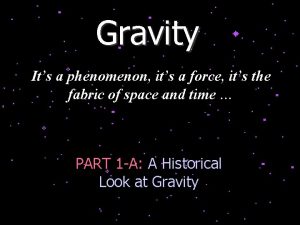9 25 18 DO NOW Its on your
















































- Slides: 48

9. 25. 18 DO NOW It’s on your desk… Complete on a separate sheet of paper. You can use your notes but you CANNOT talk! Agenda: 1. Do Now 2. Review 3. Macromolecule notes 4. Exit Ticket Place any homework on the corner of your desk. Homework: • • Quizlet Makeup Work Ed. Puzzle Quiz Corrections

Time for a change…. • Your DO NOW will be a daily quiz – Combo of the DO NOW question and verbal drills • • • You will be graded individually Points will be awarded by the class average each day. You can use your notes YOU CANNOT TALK Tardy policy remains the same.

Macromolecules Describe the basic molecular structure of the four types of macromolecules. Describe the primary function of the four types of macromolecules

MACROmolecules • Objective: Compare and contrast the basic molecular structures and primary functions of the four categories of macromolecules • Essential Question: How can the four different macromolecules be distinguished or recognized?


What is your favorite food? What does it do for your body? Let’s find out!

Why is Carbon so unique? • Each carbon atom is identical • Carbon can easily bond with other carbon atoms • carbon bonds with hydrogen, nitrogen, oxygen, sulfur and phosphorus • form long chains or rings.

Think-pair-share! • What do the prefixes “macro” and “micro” mean? • What do the prefixes “poly” and “mono” mean?

All macromolecules are made up of a CARBON BASE. CARBON HYDROGEN NITROGEN OXYGEN PHOSPHOROUS SULFUR EC Most COMMON ELEMENTS in LIVING ORGANISMS

Macromolecules of life • Carbohydrates MACROmolecules are POLYMERS • Lipids • Proteins • Nucleic acids All four macromolecules are in living things. They are found in our food because our food comes form living things!! We need food to survive!

Mono = one, Poly = many, “mer”=molecule • MONOMER is a small molecule that is a single subunit in a much larger molecule • POLYMERS are LARGE MOLECULES made of monomers bonded together. MONOMERS POLYMERIZATION POLYMERS

Macromolecules of Life: Carbohydrates • Elements: – Carbon, Hydrogen, Oxygen • Structure: – Rings, 1 C: 2 H: 1 O ratio • Functions: – Short-term energy storage – Provide fast energy – Structural support in cell wall of plants

Macromolecules of Life: Carbohydrates • Monomers are – Monosaccharides: simple sugars (glucose) sugar • Polymers are – Polysaccharides: complex sugars formed when simple sugars bond to form larger carbohydrates sugar sugar • Include starches, cellulose, glycogen

SUGAR!!!!!! Various types: Lactose Fructose Glucose Galactose What do you notice?


Carbohydrates provide immediate energy. Example: running races or playing sports

Examples of Carbohydrates Bread Potatoes Corn Beans Rice Pasta


Macromolecules of Life: Proteins • Elements: – Carbon, Hydrogen, Oxygen, Nitrogen and sometimes sulfur • Structure - Form chains (N-C-C) • Function: Shape determines the function – Control reaction rates (enzymes) – Regulate cell processes – Transport substances in/out of cell – Form and move bones/muscles

Macromolecules of Life: Proteins • Monomer: Amino acids • 20 different amino acids combine to make proteins • Proteins differ in number and order of amino acids • Polymer: Polypeptide chain

Why do we need proteins? Muscles, ligaments, tendons, and bones Without these particular structural proteins, we would look more like this….

Examples of Proteins What do you call a place of worship made out of amino acids? A cysteine chapel


Macromolecules of Life: Nucleic Acid • Elements: – Composed of: Carbon, Hydrogen, Nitrogen, Oxygen, Phosphorus • Structure: – Helix (double or single) • Function: – Store and transmit genetic info

Nucleic Acid • Monomers: nucleotides • Made of a sugar, phosphate group, and nitrogen-containing molecules What washes up on beaches? Nucleotides • Polymers: – DNA (stores genetic information. ) – RNA (builds proteins)

Quick Review…. • Where are the instructions inside a cell for making proteins? – DNA & RNA • What organelle has the instructions for making proteins? – Nucleus • What organelle makes proteins? – Ribosomes • What organelle packages the proteins? – Golgi body

Macromolecules of Life: Lipids Elements: - carbon, hydrogen, and oxygen Structure: - Long hydrocarbon chains - DO NOT form polymers - Big molecules make of smaller subunits

Macromolecules of Life: Lipids Function: 1. Provide long-term energy storage/ waterproof covering – Cushions organs & insulates body 2. Phospholipids are main component of cell membrane 3. Chemical messengers

A lady had her purse stolen. You are the detective trying to figure out who stole it. We know it is a macromolecule. She swears that it is a protein. What three questions can you ask her to make sure that she actually saw a protein and not another macromolecule?

Examples of Lipids Examples: FATS, OILS, WAXES, STEROIDS (cholesterol)

Carbs vs. Lipids • Both are made of Carbon, Hydrogen and Oxygen – How can we tell them apart? ? ? –You tell me!!! – Example of a carbohydrate: • C 6 H 12 O 6 – Example of a lipid: • C 55 H 98 O 6

Check for Understanding • Identify the macromolecule that the picture represents

Check for Understanding • Identify the polymer that the picture represents (write answer on whiteboard!) Nucleic Acid

Check for Understanding • Identify the macromolecule that the picture represents:

Check for Understanding • Identify the macromolecule that the picture represents Lipid

Check for Understanding • Identify the MONOMER that the picture represents

Check for Understanding • Identify the MONOMER that the picture represents (write answer on whiteboard!) Amino Acid (the monomer of proteins)

Check for Understanding • Identify the polymer that the picture represents

Check for Understanding • Identify the polymer that the picture represents (write answer on whiteboard!) Carbohydrate

` Any fatty Questions?


Factory: Macromolecules • • • C- level 2 voice H- use notes, textbook, and classmates before me A- complete worksheet for all four macromolecules M- remain seated in your assigned seat P- complete your own worksheet SUCCESS • Once you finish write a 3 -5 sentence summary of what your learned today on the back of your notes

Exit Ticket Clear your desk of everything but a writing utensil

1. The diagram below shows the general structure of an amino acid. Which type of molecule is formed from amino acids? A. lipids B. proteins C. carbohydrates D. nucleic acids

2. You are analyzing a compound in the laboratory. You find that it is made up of carbon, hydrogen, and oxygen in a ratio of two hydrogen atoms for each carbon atom. How will you classify the compound? A. lipid B. protein C. carbohydrate D. nucleic acid

3. Fats, oils and cholesterol are all types of what? A. cell membranes B. hormones C. lipids D. fatty acids

4. RNA and DNA are which type of macromolecules? A. carbohydrate B. lipid C. nucleic acid D. protein

5. A sugar, a phosphate group, and a nitrogen base form the building blocks of which organic compound? A. carbohydrates B. lipids C. Protein D. nucleic acids
 Vray
Vray Now i see it now you don't
Now i see it now you don't The sounding cataract haunted me
The sounding cataract haunted me Give us your hungry your tired your poor
Give us your hungry your tired your poor The emigree poem structure
The emigree poem structure When a train increases its velocity its momentum
When a train increases its velocity its momentum Sunny cloudy rainy snowy windy
Sunny cloudy rainy snowy windy If its a square it's a sonnet summary
If its a square it's a sonnet summary Its halloween its halloween the moon is full and bright
Its halloween its halloween the moon is full and bright Its not easy but its worth it
Its not easy but its worth it James forten from now is your time
James forten from now is your time Hold me now under your wings
Hold me now under your wings 当大海翻腾
当大海翻腾 Do the following in your notebook
Do the following in your notebook In your notebook answer the given question
In your notebook answer the given question Answer this on your notebook
Answer this on your notebook Somebody once asked could i spare some change for gas
Somebody once asked could i spare some change for gas Confirm your email now and get 5 minutes as a gift!
Confirm your email now and get 5 minutes as a gift! Now answer the questions en español
Now answer the questions en español Now it's your turn write
Now it's your turn write Now it's your turn to interview or be interviewed
Now it's your turn to interview or be interviewed Our her his
Our her his Summarizing is a powerful reading
Summarizing is a powerful reading Vivid words and figurative language
Vivid words and figurative language Coping with gay loneliness
Coping with gay loneliness Stop blaming your parents for your problems
Stop blaming your parents for your problems Where's your chest located
Where's your chest located There's too many kids in this tub
There's too many kids in this tub How to introduce your friend to your teacher
How to introduce your friend to your teacher R
R Effortful processing definition
Effortful processing definition Enagic founder
Enagic founder Your conscious awareness of your own name and self identity
Your conscious awareness of your own name and self identity Show me your ways meaning
Show me your ways meaning If your vehicle malfunctions turn on your hazard lights
If your vehicle malfunctions turn on your hazard lights Ideal self vs real self worksheet pdf
Ideal self vs real self worksheet pdf Examples of magazine articles for students
Examples of magazine articles for students Your treasure is where your heart is
Your treasure is where your heart is Remember god in your youth
Remember god in your youth 2021 graduation songs
2021 graduation songs Your passenger jammed his finger in the door of your m1114
Your passenger jammed his finger in the door of your m1114 First go and be reconciled to your brother
First go and be reconciled to your brother Solve each proportion write your answer in your notebook
Solve each proportion write your answer in your notebook In your notebook write down the times
In your notebook write down the times Your treasure is where your heart is
Your treasure is where your heart is How old you
How old you Wash your hands put on your nightgown analysis
Wash your hands put on your nightgown analysis Taking responsibility for your health worksheet
Taking responsibility for your health worksheet Open your eyes free your mind
Open your eyes free your mind
